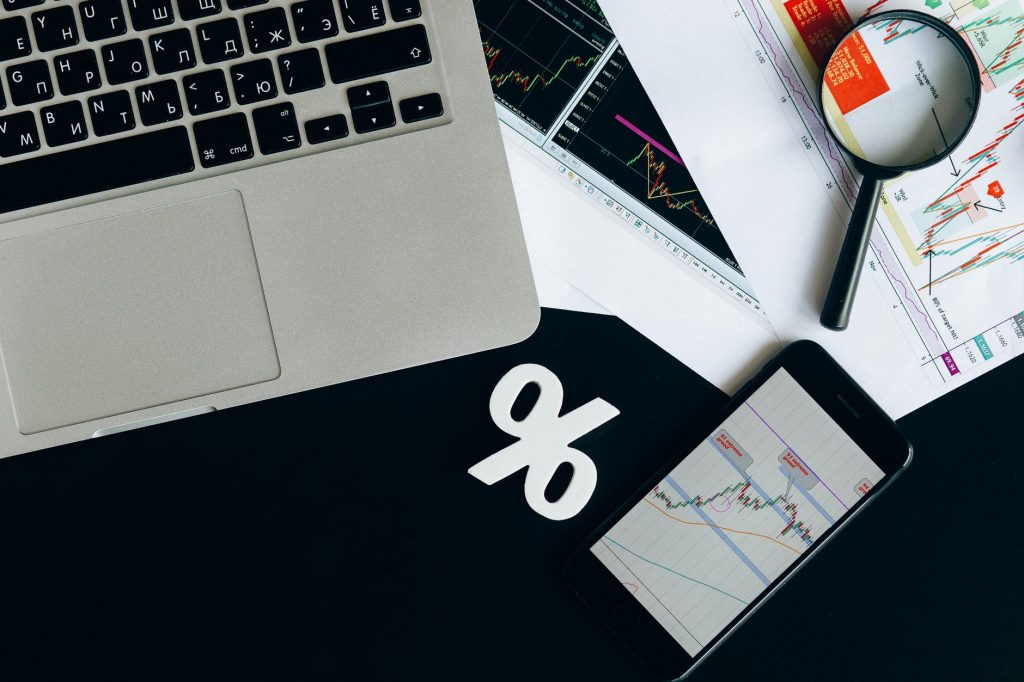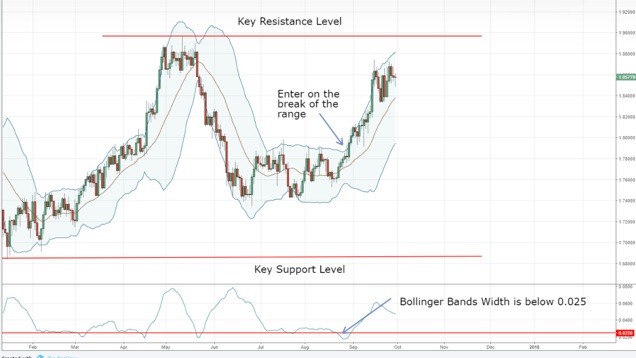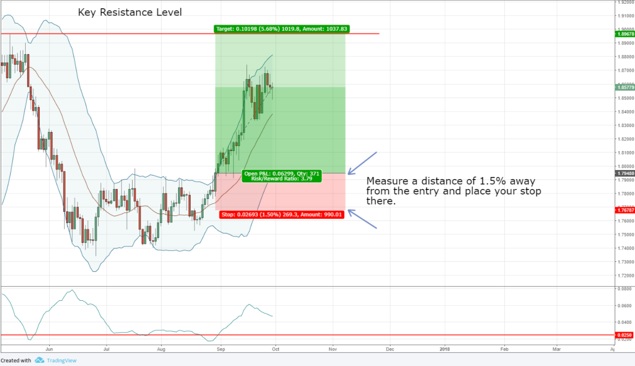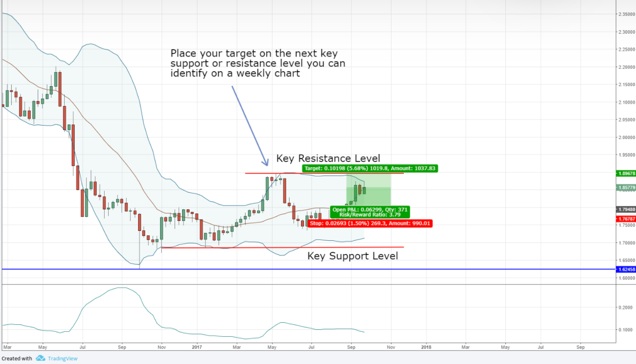End of day trading is a convenient strategy for many traders. By placing your trades at the end of each trading day, you don’t need to spend time watching the markets all day, can avoid being distracted by news, and it can often lead to cheaper rates. This page will explain what end of day trading means, the benefits and risks, and how to get started with end of day trading. We will also detail an example.
What Is End Of Day Trading?
An end of the day trading strategy simply means to make trading decisions very near to, or after the markets close. Whereas day traders watch charts all day, opening and closing trades when they choose, end of day traders typically trade at the close or the open. You can also continue trading stocks and ETFs in the after-hours market.

By placing your trades at the end of, or after the trading day, you are not distracted by news, changing market prices, or day-to-day life. End of day trading setups allow you to cut out the noise, can often lead to cheaper rates, and enable you trade with limit or stop orders.
This strategy is helpful for individuals who want to continue working their day job.
What Time Does End of Day Trading Start?
Before we dive into the specifics, let’s first look at when end of day trading begins. The times for day trading vary depending on which forex market you’re trading in, whether it’s in the UK or elsewhere.
The forex market is open 24 hours a day, but local markets have different opening and closing times. For example, the European trading session opens at 8 am Frankfurt time and closes at 5 pm local time. If you’re end of day trading on the London market, it opens and closes an hour later. When trading AUD, a popular currency for forex traders, the ASX (Australian stock exchange) is open from 10 am to 4 pm Sydney time, so end of day trading takes place near the 4 pm mark.
In general, traditional day trading is when you see more market participants, which leads to higher liquidity. However, end of day trading often sees a high volume of activity as many traders unwind their positions and close trading for the day.
So, to figure out what time day trading ends, check your local markets of interest.
Strategy Example
Placing your orders at the end of a trading day means you can still use the same intraday strategies. Many traders use swing trading on stocks or forex, using the end of day method. It’s simply the timing of when you place your trades that is different.
The best end of day trading methods use software to implement strategies.
The system will create pending orders for the next day while time is effectively paused (i.e. when no trades are occurring).
One best end of day forex trading method is breakouts. This strategy allows you to capture the beginning of trends within currency moves.
The forex market contracts into periods of little movement (low volatility) and then expands into trends. Capturing the moment the market begins its expansion into a trend can generate profits. This is because you are getting in near the beginning of a trend. You are also not trying to pick a bottom.
This means you can capture some big winning trades (as the trend still has a long way to go), but also keep the win rate relatively high (compared to picking bottoms).
To trade a breakout, you need to wait for a low volatility range to form. You then enter a trade on the first move outside the range that has formed. Here is an example.

The key to breakout trading is that you have larger winning trades than you have losing trades. To help achieve this, you can place a stop-loss.
Ideally, you want to measure between a 0.5% and 2% move of the currency and place the stop-loss there. 1.5% is optimal to keep the win rate high.

You also want to put a profit target on the next major level.
To identify this level, you can look at a weekly chart for the nearest support and resistance level.

Benefits Of End Of Day Trading
There are numerous advantages to end of day trading:
- Convenience – End of day trading can be more convenient compared to intraday investing. If you have a full-time job, you don’t need to watch the markets all day. Your analysis starts when the rest of the markets are closing, so it does not interfere with your regular job. You can place your orders to go live at the end of the trading day. Your positions will be left open overnight, but your trade adjustments, such as moving your risks to break even, or adjusting the profit levels, are easier to manage.
- Cheaper rates – If you are trading stocks or futures, you may need to pay fees for intraday data. You may also pay other fees, such as transaction costs and a software charge. End of day trading is all about trading with closing prices. Many online brokers do not charge for this service. Because the end of day prices are widely available from everywhere, you do not have to pay additional sums to gain real-time market data. Scanning tools are also relatively cheaper when it comes to end of day trading.
- Limit or stop orders – End of day trading means you’ll likely need to use limit or stop orders.
Some online brokerages charge a higher fee when you trade with market orders. This is because the execution costs are high. With limit orders, you are adding liquidity to the security that you want to trade. As a result, some brokers offer lower fees if you trade with limit orders.
- Discipline – End of day trading can make you more disciplined. You are using just a few hours a day to analyse the markets to create a trading plan. Because your attention is more focussed, the temptation of overtrading and the emotional influences of daily news announcements should be reduced.
Downsides Of End Of Day Trading
Despite some benefits, there are several downsides to end of day trading:
- Missing overnight developments – The biggest risk is that you are trading when the markets are less active. This puts you at risk of overnight market developments. For example, when earnings are released, prices tend to gap significantly. Because you are trading just once a day, at the closing hours of the markets, it can leave your positions vulnerable to overnight market movements.
- Manage risk efficiently – With day trading you can manage your risk efficiently. This is because you are constantly monitoring the markets. This isn’t the case with end of day trading. You can either make huge profits or your stops can be triggered even before you had a chance to adjust your risk parameters.
- Liquidity – You are also at risk of reduced liquidity with end of day trading.
- As a result, there is a chance that your limit orders will not be triggered at the price you wanted.
- Earnings season – Earnings timings are something to be wary of when end of day trading. Because most companies tend to release their earnings before the market opens or after the market closes, you can expect to see pre-market and after-market pricing turn volatile.
How To Get Started End Of Day Trading
As with all trading strategies, you first need to find a top broker and fund your account to access daily prices, charts and risk tools. Trading 212 and Robinhood are two popular options for end of day trading. It’s also always worth comparing spreads, platform features, mobile signals and customer support during end of trading hours.
Final Word On End Of Day Trading
End of day trading is a convenient method for anyone who wants a straightforward investing strategy. It’s also useful for anyone who wants to continue working their regular day job. End of day trading allows you to cut the noise, use limit or stop orders to control your trades, and can lead to competitive rates. Make sure you also use a top broker to get started end of day trading.
FAQ
What Is The Difference Between Intraday And End Of Day Trading?
Intraday trading is when forex traders place orders, or open and close positions, while the local market is open.
End of day trading is a strategy whereby traders make forex decisions very near to, or after the markets close.
What Is The Best End Of Day Trading Software?
Any top broker will provide you with the best software to support an end of day trading strategy. Look for a broker that provides access to charts, trading signals, and risk tools, such as stop losses and limit orders. These will support your technical analysis and may help you become a successful forex trader.
Can You Day Trade At Night?
Overnight trading is the trading that takes place outside of normal trading hours. Bonds have extended trading hours and overnight trading can take place on stocks between 4 am and 9:30 am (when the exchanges open) and 6 pm (when the exchanges close) and 8 pm.
Does High Frequency Investing During End Of Day Trading Affect The Markets?
High-frequency trading and end-of-day price dislocation can affect the markets.
What are the benefits of more competition in trading?
Firstly, more competition is accompanied by high-frequency trading and larger volumes, which improve market liquidity.
Secondly, more competition may mean that high-frequency traders adapt their strategies and engage in more speculative trades, which can impact market liquidity.
Can You Trade At The End Of The Trading Day With Robinhood?
Robinhood offers extended-hours trading. This means you’ll be able to trade during pre-market and after-hours sessions. That equals an extra two and a half hours of market access, each day.
Can You Trade ETFs With End Of Day Trading?
Trading for stocks and ETFs typically closes at 4 pm ET, but unlike with mutual funds, you can continue trading stocks and ETFs in the after-hours market.
